Whole Person Care Today
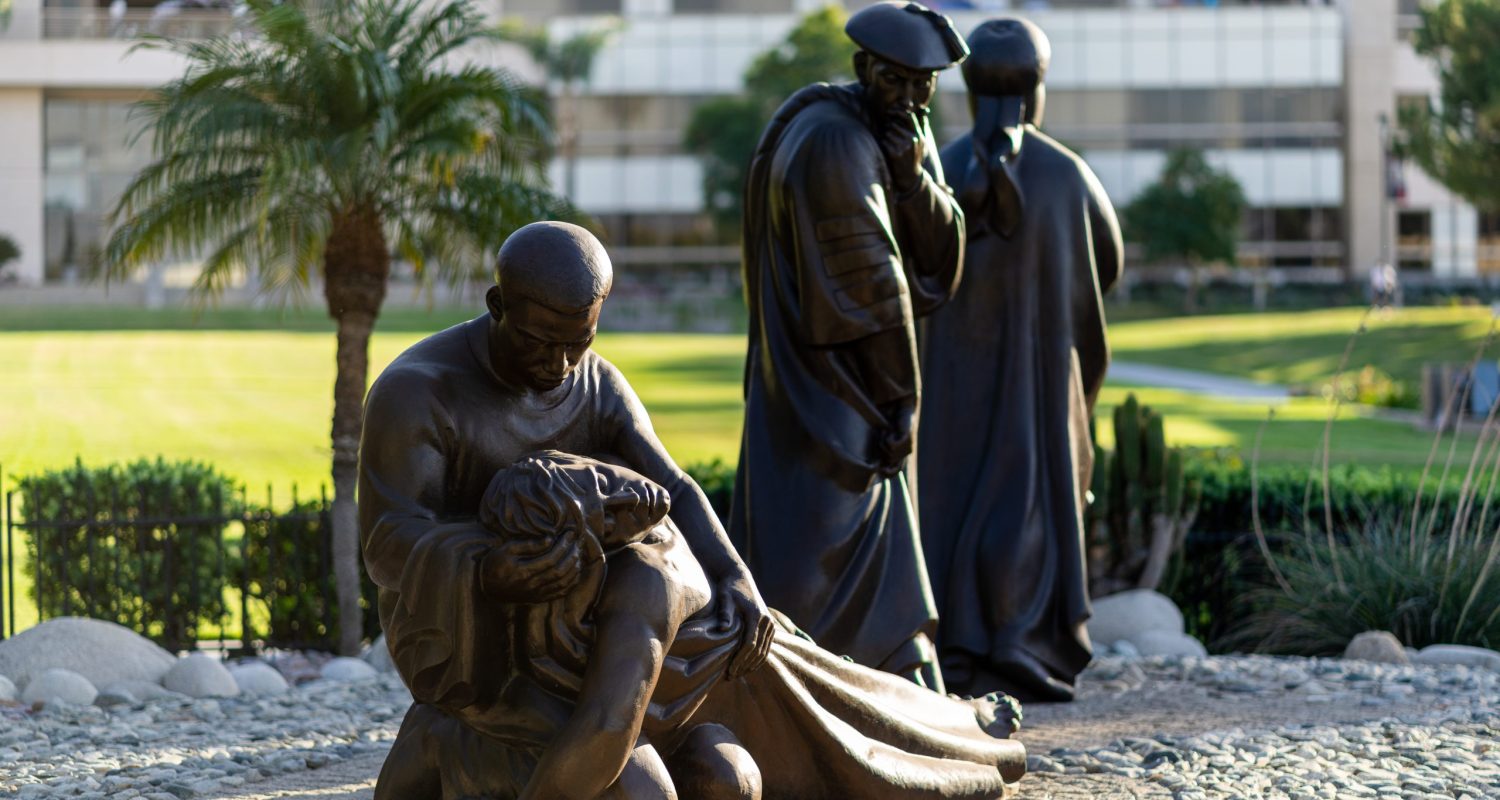
By Jeffrey Gang, DMin, and Roger D. Woodruff ’81
The motto, “To make man whole,” has been used pervasively throughout Loma Linda University (LLU) for generations. Heard so frequently, it is easy to assume everyone knows the origin and significance of these four words. But how did this phrase become the motto of Loma Linda University? How is it incorporated into our medical school curriculum today? Will its meaning change over a physician’s career? Is it relevant to medicine today?
TO MAKE MAN WHOLE
In the March 1955 edition of the College of Medical Evangelists’ (CME) ALUMNI JOURNAL, R. Theodore Bergman ’30 reflected on the phrase “To make man whole.” It had recently been chosen as a theme for the yearlong celebrations to commemorate CME’s 50th anniversary. Apparently, there were some who doubted the choice of the theme at the time. As Dr. Bergman admitted, they were slow to grasp the significance of the words, “To make man whole,” writing, “Perhaps we thought it a bit trite.” However, he acknowledges, “as we thought further, we realized the theme was not trite—but ageless. It is a guiding star which takes an institution through all the years of its existence.”1
Looking back more than a half century later on the school’s choice to use the phrase, “To make man whole,” we see Dr. Bergman’s foresight. Within a few years, the phrase would become the official motto of the institution. Today, it is ubiquitous throughout LLU, continually reminding us of our mission to continue the teaching and healing ministry of Jesus. One of LLU’s founders, Ellen G. White, once reminded us, “We have nothing to fear for the future, except as we shall forget the way the Lord has led us, and His teaching in our past history.”2 White’s wisdom may be applied to founding ideas as well, and “To make man whole” is such an idea. While our world has changed vastly since the phrase was chosen nearly seventy years ago, the vision certainly has not.
We may use different language now to describe what it means to be human, but the original idea remains “a guiding star” as Dr. Bergman suggested and Jack W. Provonsha ’53-A affirmed almost 25 years after “To make man whole” became our motto. Reflecting on the One who came to make us whole, Dr. Provonsha wrote, “His healing expressed His total concern for the persons for whom He ministered. Jesus saw little of the sharp distinctions sometimes made in other cultures and times between the soul and body of man. He could say, ‘Whether is it easier to say thy sins be forgiven thee or take up thy bed and walk?’ for He knew that man was a unity even in his illness.”3
INTEGRATION INTO LLUSM CURRICULUM
Championed by Wil Alexander ’93-hon and strongly supported by B. Lyn Behrens ’63-AFF, who was serving as Loma Linda University School of Medicine (LLUSM) dean, a new religion class was added to the LLUSM basic sciences curriculum in the late 1980s. Students were divided into groups of 12–15, co-led by a physician and a pastor. In these classes, they worked through pertinent gospel stories to understand how the ministry of Jesus was relevant in meeting the spiritual needs of patients in the practice of medicine. This formal addition to the medical school curriculum was well received and led to further class development. Over the years, courses such as an introductory class for all first-year medical students titled, “Orientation to Religion and Medicine,” (following the same model of pastors and physicians working together with small groups of students), “Whole Person Care,” and “Wholeness for Physicians” have been important platforms for teaching whole person care (WPC). The CLEAR Whole Person Care™ model developed by Carla Gober Park, PhD, has recently been incorporated into the curriculum to guide the process of providing WPC.
Through the LLUSM Committee for Spiritual Life and Wholeness, there has also been an ongoing effort to encourage resident and attending physicians, many of whom are not graduates of LLUSM, to model WPC and to encourage medical students to practice WPC skills during their clinical rotations in outpatient settings and in the hospital. Several residency programs have formal “wholeness” rounds on a regular basis, with students, residents, and attendings participating along with a chaplain. In family medicine, Dr. Alexander rounded regularly on the resident hospital service—starting in 1987 and continuing until his death just a few years ago. Residents renamed the experience, “Love Rounds,” as they observed Dr. Alexander’s gentle approach with patients. Though by their nature in the teaching setting these patient encounters are intentionally longer in duration, many faculty and residents model the practice with their patients—demonstrating that meeting this need can be accomplished in brief moments within visits.
RELEVANCE TODAY
Demonstrated by research and now widely accepted in the medical community, addressing the spiritual needs of patients is critical in providing care for the whole person. However, the general approach, even if formally addressed, is often from a humanistic perspective. LLU uniquely teaches and encourages this work from a Christian perspective. The motto, “To make man whole,” is meaningful and well-known. When taken in its full context, “To continue the teaching and healing ministry of Jesus Christ, to make man whole,” it comes to life. For teachers and learners at LLU and for graduates around the world, this enriched meaning adds a dimension rarely found in medical education. It moves the focus to the One who can make the real difference in patients’ lives. During his long tenure as dean of LLUSM, H. Roger Hadley ’74 championed WPC—having been the first medical student during training to round with Dr. Alexander. A wonderful illustration of how this approach to patient care impacts the world today and how LLUSM students, alumni, and friends are making a tangible difference in the lives they touch is the series of devotional books edited by Dr. Hadley’s wife, Donna: “Morning Rounds,” “Evening Rounds,” and most recently, “Grand Rounds.” These books contain countless examples of WPC in action.
CONCLUSION
What began as a simple motto is now the central tenet of education and health care at LLU. From Dr. Alexander’s early rounds with Harvey A. Elder ’57 to the formalized classes offered today, practical application of WPC has blessed and will continue to bless countless patients and physicians. This concept is especially relevant in a world where technology prioritizes efficiency over connection; where it is easy to lose our grasp on the personal touch of medicine.
Whole person care pushes us to focus on thoughtfully searching for ways to address the spiritual, emotional, and physical issues of the patient so they can be more completely healed. When we are able to achieve that, we realize what a privilege it is to serve as the hands and feet of God as we endeavor “To make man whole.”
What Does Whole Person Care Mean to You?
We asked a medical student, a resident, a mid-career alumna, and a recently retired alumnus to consider this question. Their thoughtful responses illuminate a spectrum of perspectives on this approach to medicine.
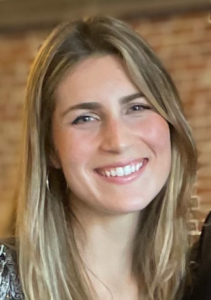 Haley Kempf (’24): A few months back, volunteering for Loma Linda University’s street medicine team, I personally experienced the necessity for whole person care. My patient, a middle-aged man in an oversized jacket, presented with the simple request of having his glucose levels checked. Pressed to get through the litany of patient interview questions first, I brushed aside his comment. Twenty minutes later, with my completed note in hand, I asked if he had any other concerns. To my surprise, he explained that his doctors from the clinic managed his constellation of issues, so he simply needed his glucose levels measured to ensure proper dosing for his schizophrenia medication.
Haley Kempf (’24): A few months back, volunteering for Loma Linda University’s street medicine team, I personally experienced the necessity for whole person care. My patient, a middle-aged man in an oversized jacket, presented with the simple request of having his glucose levels checked. Pressed to get through the litany of patient interview questions first, I brushed aside his comment. Twenty minutes later, with my completed note in hand, I asked if he had any other concerns. To my surprise, he explained that his doctors from the clinic managed his constellation of issues, so he simply needed his glucose levels measured to ensure proper dosing for his schizophrenia medication.
Humbled, I was left to ponder: what does health care look like when we listen and prioritize our patients’ goals rather than our own agenda? In my efforts to be efficient, this doctor-centered approach failed to allow me to be present for my patient. Being genuinely curious about our patients’ stories allows us to be more perceptive and efficient when empowering them to make well-informed decisions. Compassionate care does not have to take more time, it simply requires humility to allow the patients’ goals to guide the conversation.
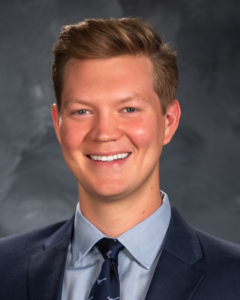 Karl Wallenkampf ’21: Burnout is pervasive. It is easy to become overwhelmed by the seeming conveyor belt of admissions, the past medical histories that challenge even the longest biblical “begats.” Yet the simple questions I learned from Wil Alexander ’93-hon at LLUSM give moments of clarity to help me see through pathophysiology to personhood.
Karl Wallenkampf ’21: Burnout is pervasive. It is easy to become overwhelmed by the seeming conveyor belt of admissions, the past medical histories that challenge even the longest biblical “begats.” Yet the simple questions I learned from Wil Alexander ’93-hon at LLUSM give moments of clarity to help me see through pathophysiology to personhood.
“What are you famous for?” I ask them. The answers are diverse, inspiring, and beautiful. Once, a young mother with hemolytic anemia—her baby now at home—barely spoke above a whisper, “I’m not famous for anything.” Her mother sitting nearby disagreed. “No!” She told me, “She’s so strong, a wonderful listener, incredibly kind.” They began to cry together. Dr. Alexander’s question has helped me meet retired musicians, prophetic poets, proud grandmothers, and even one patient who claimed she was the most innovative user of curse words during arguments. I decided to never argue with her.
These questions and my patients’ vulnerability, laughter, or even tears deliver me from the vagaries of electronic medical records and frenetic paging into the immanence of the patient before me and who they are, not just what they may have. Whole person care saves our patients, and it may yet save us, too.
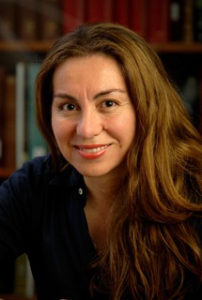 Jenny M. Jaque ’04: “But a Samaritan, as he traveled, came where the man was; and when he saw him, he took pity on him. He went to him and bandaged his wounds, pouring oil and wine. Then he put the man on his own donkey, brought him to an inn and took care of him. The next day he took out two denarii and gave them to the innkeeper, ‘Look after him,’ he said, ‘and when I return, I will reimburse you for any extra expense you may have.’” Luke 10:33–35 (NIV).
Jenny M. Jaque ’04: “But a Samaritan, as he traveled, came where the man was; and when he saw him, he took pity on him. He went to him and bandaged his wounds, pouring oil and wine. Then he put the man on his own donkey, brought him to an inn and took care of him. The next day he took out two denarii and gave them to the innkeeper, ‘Look after him,’ he said, ‘and when I return, I will reimburse you for any extra expense you may have.’” Luke 10:33–35 (NIV).
I am particularly fond of the Good Samaritan sculpture on the LLU campus. All through my medical school years, that statue was a reminder of what my professors worked hard to impress on young, motivated medical scholars—the need to provide whole person care. The need to not only arrive at an accurate and precise diagnosis, but to also discover any limitations that prevent access to, and success in providing care. This at times meant dealing with underlying depression, anxiety, distrust, history of abuse, limited funds, and low literacy.
To me, whole person care is seeing more than the diagnosis in front of you, it is seeing the person in front of you.
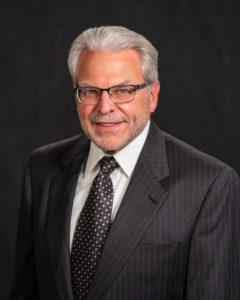 Jon R. Kattenhorn ’74: When I was a medical student, and then an intern, I had two medical oncology rotations in which Wil Alexander ’93-hon was ever present. I learned so much from him about whole person care, though I am not sure it was called that then! I was inspired by his influence and encouragement as we cared for patients with either life-threatening or terminal illnesses.
Jon R. Kattenhorn ’74: When I was a medical student, and then an intern, I had two medical oncology rotations in which Wil Alexander ’93-hon was ever present. I learned so much from him about whole person care, though I am not sure it was called that then! I was inspired by his influence and encouragement as we cared for patients with either life-threatening or terminal illnesses.
Of course we prayed with them, but more importantly, we listened, we interacted, we learned about their families, their beliefs, and how they approached death. Not all of them had hope. For some, it was like approaching a precipice with no way to avoid falling off. Others were able to smile through their tears, and perhaps even rejoice in the promises they held dear.
During my years of practice, I was fortunate to be a part of many of my patients’ most joyous milestones: the birth of a healthy baby. I was often asked to help them celebrate that time with a prayer—what a privilege that was! Unfortunately, as we know, when the occasion is not a joyous one, it is often a tragedy. In those moments, sensitivity to our patient’s feelings and beliefs is integral to supporting them during their personal crisis. They don’t need a Bible study at that point. They need someone willing to hold their hand, understand their grief, and care about them—perhaps offer a simple prayer. I think our willingness to step outside our clinical focus and fulfill these needs is the heart of caring for the whole person.
Endnotes
- R. Theodore Bergman ’30, “Alumni Need to be Told,” ALUMNI JOURNAL, vol. 26, no. 3, (March 1955): 7.
- White, Ellen G., Life Sketches, 196.2.
- Jack W. Provonsha ’53-A, “An Idea Whose Time Has Come,” Scope, vol. 10, no. 2, (March/April 1973): 10–11.
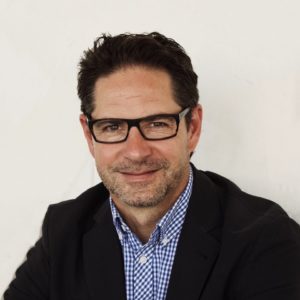
Jeffrey Gang, DMin, is an assistant professor in the School of Religion at LLU, where he teaches courses on the integration of religion and health in the university’s eight schools. He currently lives in Redlands, California, with his wife, Gina, and their three children.
 Dr. Woodruff was the first program director for the LLU family medicine residency in the late 1980s and returned from private practice eight years ago to serve as chair of the department of family medicine. When not working, he can be found birding or spending time with his children and new grandson.
Dr. Woodruff was the first program director for the LLU family medicine residency in the late 1980s and returned from private practice eight years ago to serve as chair of the department of family medicine. When not working, he can be found birding or spending time with his children and new grandson.

